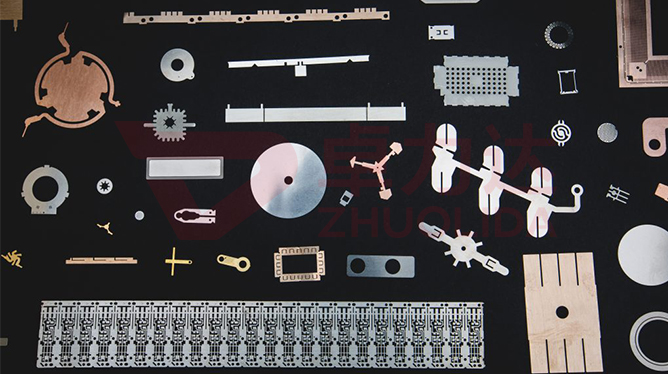
Metal bipolar plates are an important part of energy conversion devices such as fuel cells and electrolytic cells. The choice of its manufacturing process directly affects the performance, cost and production efficiency of the product. Stamping process and etching process are two commonly used manufacturing methods for metal bipolar plates, and there are obvious differences between them.
1. Principle of the process
Stamping process is a traditional metal processing method, the principle is to use the stamping machine to stamp the metal plate into the required shape and size. In the manufacture of metal bipolar plates, the stamping process usually includes steps such as shearing, stretching, punching, bending, etc., which can prepare bipolar plates with complex shapes and structures.
Etching is a process in which patterns or structures are produced by chemical etching. In the manufacture of metal bipolar plates, the etching process mainly consists of three steps: pre-treatment, pattern transfer and etching. Pre-treatment is mainly to remove impurities and oxidized layers on the metal surface to facilitate the subsequent pattern transfer; pattern transfer is to transfer the designed pattern to the metal plate through photolithography, developing and other steps; corrosion is to corrode away the unprotected metal parts to obtain the desired shape and structure.
2.Process Characteristics
Stamping process has the advantages of high productivity and low manufacturing cost, which is suitable for mass production. At the same time, stamping process can process bipolar plates with higher precision and smaller tolerances of shape and size. However, stamping process for some complex shape and structure of the bipolar plate processing may have some difficulty, need to use multiple processes and complex mold design.
The etching process can process bipolar plates with complex shapes and structures, and is suitable for the preparation of bipolar plates with microfine structures and high precision. Another advantage of the etching process is that it can control the depth and shape of the etching by changing the thickness and pattern design of the photoresist, thus realizing precise control of metal thickness. However, the etching process has lower productivity, higher manufacturing costs, and may be difficult for some larger sizes of bipolar plate processing.
3. Material selection
Stamping process and etching process for the selection of metal materials are also different. Stamping process is suitable for processing metal materials with certain plasticity and toughness, such as aluminum alloy, stainless steel and so on. These materials are not easy to crack or fracture when subjected to impact and deformation. Etching process is suitable for processing metal materials with a certain degree of corrosion resistance, such as nickel, titanium and so on. These materials are not easy to be corroded or deformed when subjected to chemical corrosion.
4. Scope of application
Due to the stamping process and etching process have different advantages and scope of application, they have different application areas in the manufacture of metal bipolar plates. Stamping process is commonly used in the preparation of bipolar plates with a certain degree of precision and complex shape, such as automotive batteries, portable device batteries and other fields of bipolar plate manufacturing. Etching process is often used to prepare bipolar plates with microstructure and high precision, such as fuel cells, electrolytic cells and other energy conversion devices in the manufacture of bipolar plates.
5.Development trend
With the continuous upgrading and development of energy conversion devices, the manufacturing process of metal bipolar plates is also improving and innovating. In the future, both the stamping process and the etching process will continue to be developed and optimized. The stamping process will improve production efficiency and product quality by adopting more advanced mold design and manufacturing technology; the etching process will achieve finer pattern transfer and higher production efficiency by adopting more advanced materials and photolithography technology. Meanwhile, with the continuous development of 3D printing technology, the manufacturing of metal bipolar plates will also gradually develop in the direction of digital manufacturing to achieve more flexible, efficient and customized production.
Contact: andy_Lai
Phone: 18938693450
E-mail: yw9@zldsmt.com
Add: Building A3, Huafa Industrial Park, Fuyong Town, Fuyuan Road, Fuyong Town, Baoan District, Shenzhen,China